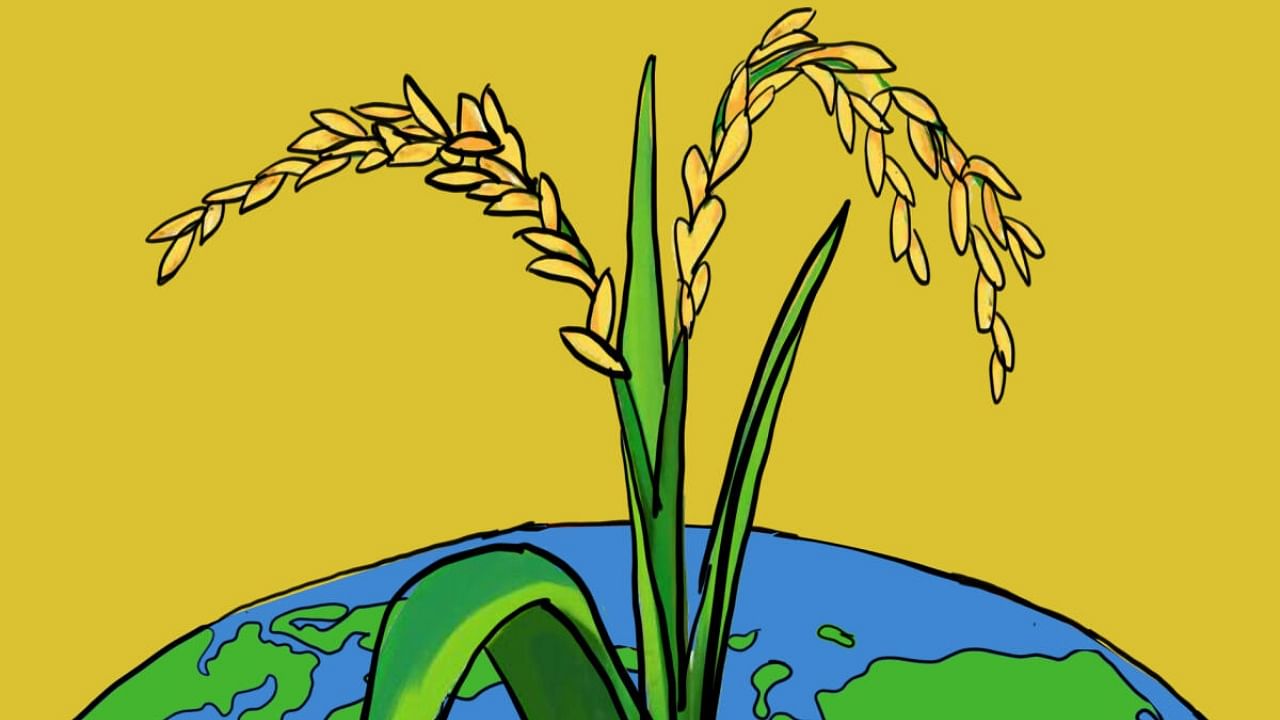
Rice is in trouble as Earth heats up, threatening the food and livelihood of billions of people. Sometimes there’s not enough rain when seedlings need water, or too much when the plants need to keep their heads above water. As the sea intrudes, salt ruins the crop. As nights warm, yields go down.
These hazards are forcing the world to find new ways to grow one of its most important crops. Rice farmers are shifting their planting calendars. Plant breeders are working on seeds to withstand high temperatures or salty soils. Hardy heirloom varieties are being resurrected.
Also Read: A looming global food crisis
And where water is running low, as it is in so many parts of the world, farmers are letting their fields dry out on purpose, a strategy that also reduces methane, a potent greenhouse gas that rises from paddy fields.
The climate crisis is particularly distressing for small farmers with little land, which is the case for hundreds of millions of farmers in Asia. “They have to adapt,” said Pham Tan Dao, irrigation chief for Soc Trang, a coastal province in Vietnam, one of the biggest rice-producing countries in the world. “Otherwise they can’t live.”
In China, a study found that extreme rainfall had reduced rice yields over the past 20 years. India limited rice exports out of concern for having enough to feed its own people. In Pakistan, heat and floods destroyed harvests, while in California, a long drought led many farmers to fallow their fields.
The challenges now are different from those 50 years ago. Then, the world needed to produce much more rice to stave off famine. High-yielding hybrid seeds, grown with chemical fertilisers, helped. In the Mekong Delta, farmers went on to produce as many as three harvests a year, feeding millions at home and abroad.
Today, that very system of intensive production has created new problems worldwide. It has depleted aquifers, driven up fertiliser use, reduced the diversity of rice breeds that are planted, and polluted the air with the smoke of burning rice stubble. On top of that, there’s climate change: It has upended the rhythm of sunshine and rain that rice depends on.
Perhaps most worrying, because rice is eaten every day by some of the world’s poorest, elevated carbon dioxide concentrations in the atmosphere deplete nutrients in each grain.
Rice faces another climate problem. It accounts for an estimated 8% of global methane emissions. That’s a fraction of the emissions from coal, oil and gas, which together account for 35% of methane emissions. But fossil fuels can be replaced by other energy sources. Rice, not so much. Rice is the staple grain for an estimated three billion people. It is biryani and pho, jollof and jambalaya — a source of tradition, and sustenance.
“We are in a fundamentally different moment,” said Lewis H Ziska, a professor of environmental health sciences at Columbia University. “It’s a question of producing more with less.
How do you do that in a way that’s sustainable? How do you do that in a climate that’s changing?”
In 1975, facing famine after war, Vietnam resolved to grow more rice.
It succeeded spectacularly, eventually becoming the world’s third-largest rice exporter after India and Thailand. The green patchwork of the Mekong Delta became its most prized rice region.
At the same time, though, the Mekong River was reshaped by human hands. Starting in south-eastern China, the river meanders through Myanmar, Laos, Thailand and Cambodia, interrupted by many dams. Today, by the time it reaches Vietnam, there is little fresh water left to flush out seawater seeping inland.
Climate change brings other risks. You can no longer count on the monsoon season to start in May, as before. And so in dry years, farmers now rush to sow rice 10 to 30 days earlier than usual, researchers have found. In coastal areas, many rotate between rice and shrimp, which like a bit of saltwater. Shrimp bring in high profits, but also high risks. Disease sets in easily. The land becomes barren.
Elsewhere, farmers will have to shift their calendars for rice and other staple grains, researchers concluded in a recent paper. Scientists are trying to help them.
The cabinet of wonders in Argelia Lorence’s laboratory is filled with seeds of rice — 310 different kinds of rice.
Many are ancient, rarely grown now. But they hold genetic superpowers that Lorence, a plant biochemist at Arkansas State University, is trying to find, particularly those that enable rice plants to survive hot nights, one of the most acute hazards of climate change.
She has found two such genes so far. They can be used to breed new hybrid varieties.
The new frontier of rice research involves Crispr, a gene-editing technology that US scientists are using to create a seed that produces virtually no methane.
In Bangladesh, researchers have produced new varieties for the climate pressures that farmers are dealing with already. Some can grow when they’re submerged in floodwaters for a few days.
No matter what happens with the climate, said Khandakar M Iftekharuddaula, chief scientific officer at the Bangladesh Rice Research Institute, Bangladesh will need to produce more. Rice is eaten at every meal. “Rice security is synonymous with food security,” he said.